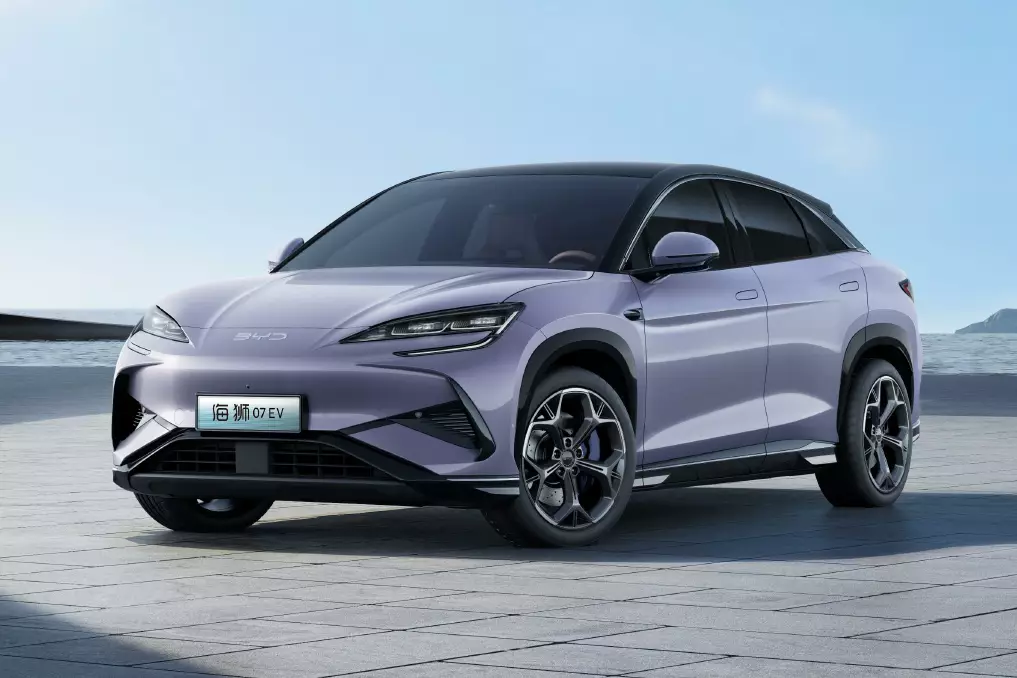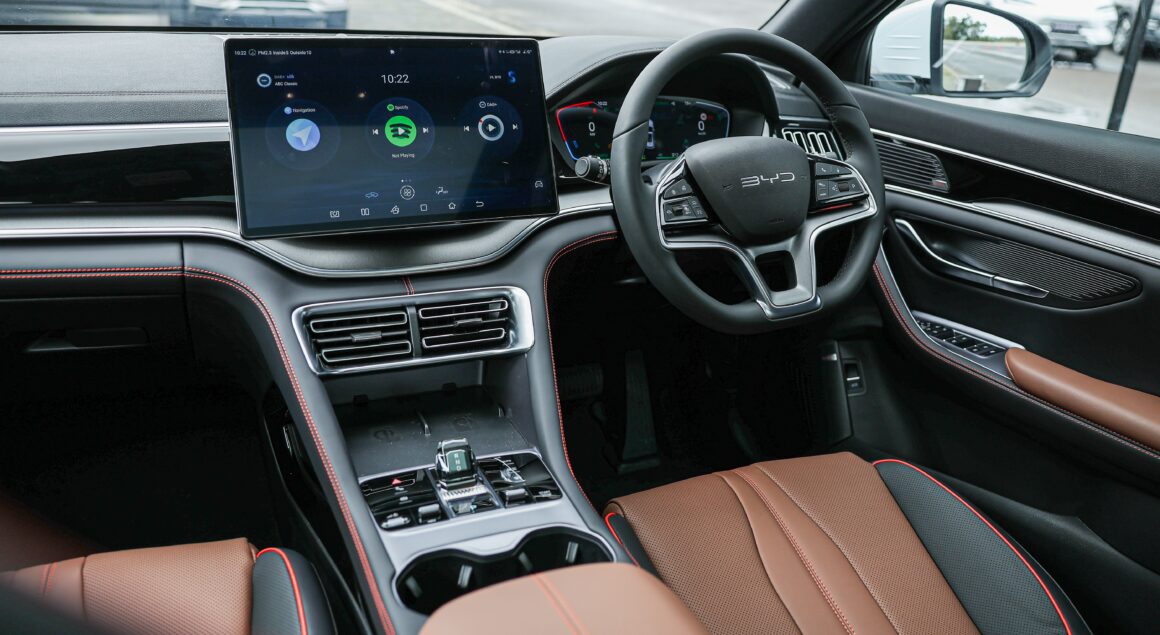Details of BYD’s mid-sized electric SUV, the Sealion 7, have finally been revealed thanks to the road vehicles approval process ahead of its imminent launch.
The Sealion 7’s road vehicle type approval documentation, revealed this week, shows two variants of the model heading to local shores.
The first is a rear-wheel-drive (RWD) single-motor variant, packing up to 230 kW. A dual-motor, more performance-focused all-wheel-drive (AWD) variant with a front motor with 160 kW is also included in the approval documentation, bringing the total output to 390 kW.
The power outputs, weights and towing capacities for both Sealion 7 variants have also been revealed.

The 4.83-metre-long SUV’s RWD variant weighs 2,225 kg and has a towing capacity of 750 kg. The AWD variant’s towing capacity increases to 2,340 kg, and the braked towing capacity increases to 1,500 kg.
For comparison, Australia’s best-selling EV, the Tesla Model Y in its base RWD variant, has a 1,600 kg braked towing capacity, weighs 1,997 kg, and is 4.65 metres long.
The approval documentation did not provide details on the battery configuration. Still, in markets like the UK, the top-spec AWD variant of the Sealion 7 comes with a large 91.3 kWh battery pack.
This variant can have peak charging speeds up to 230 kW over the 150 kW offered in the other variants, with an 82.5 kWh battery pack that’s the same as the one in the current locally sold Seal Premium and Performance sedans.
On the inside, the BYD Sealion 7 is expected to offer a similar 15.4-inch infotainment screen found in the current Seal and a more modern interior.

See our EV database here: Australian electric vehicle sales by month and by model in 2024
More details on the upcoming Sealion 7, including key local specifications and pricing, will likely be announced in the first quarter of next year.
The BYD Sealion 7 will likely compete with Tesla’s Model Y, which should have a refreshed version for drivers to choose from when the Sealion 7 lands in Australia. On pricing, we expect this model to start at closer to $56,000 when it is announced in the coming months.
This would also put it in the ballpark of the recently launched Xpeng G6, which, by some accounts, has had a whole lot of interest from buyers that were waiting for the BYD Sealion 7 and did not want to go for BYD’s current mid-sized Sealion 6 PHEV offering.
We look forward to learning more about the pricing and detailed local specifications as the competition in the electric SUV space stiffens to kick-start 2025.
For more details on individual EV models available in Australia, please visit our EV Models page.

Riz is the founder of carloop based in Melbourne, specialising in Australian EV data, insight reports and trends. He is a mechanical engineer who spent the first 7 years of his career building transport infrastructure before starting carloop. He has a passion for cars, particularly EVs and wants to help reduce transport emissions in Australia. He currently drives a red Tesla Model 3.

